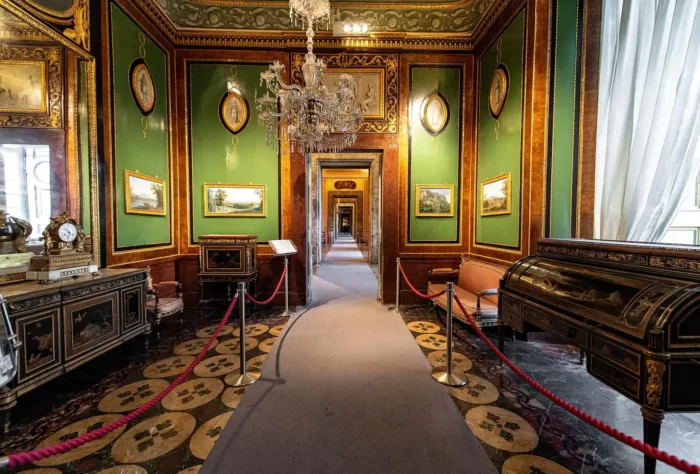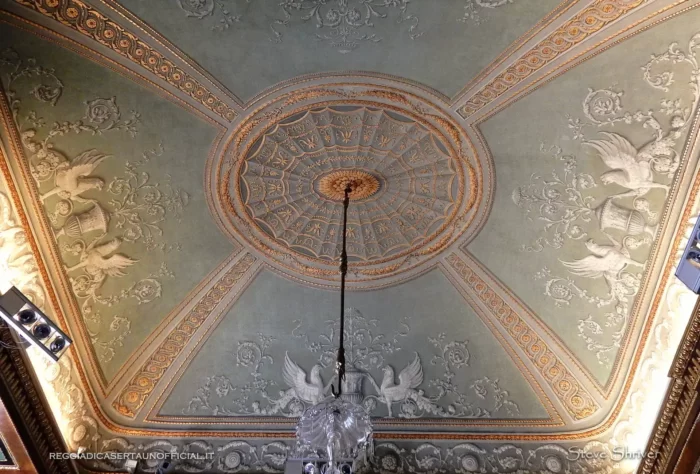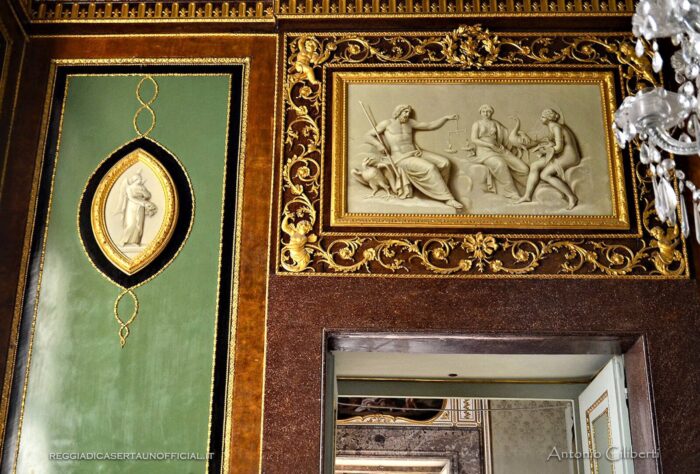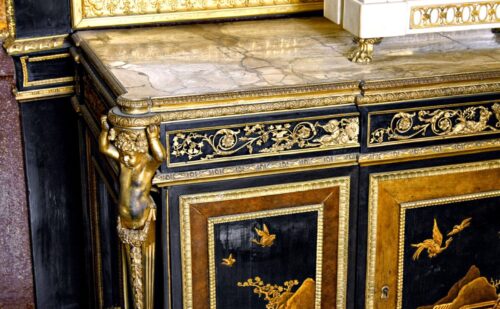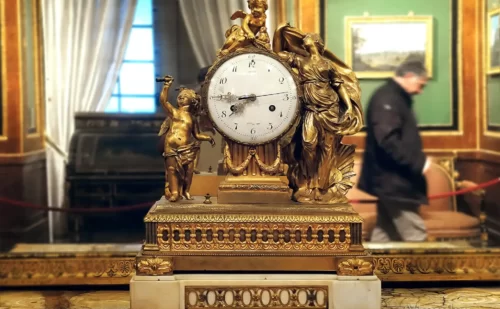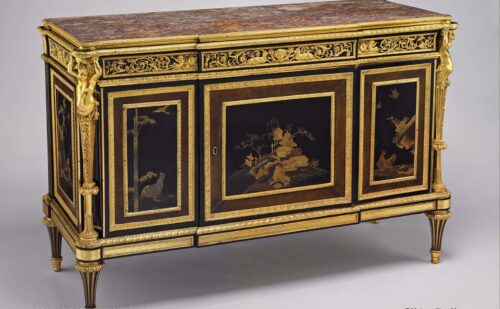The Study of the King in the Royal Palace of Caserta
The Study of the King became well known throughout Europe for its preciousness.
Description
The Study of the King, as well as the entire apartment of King Ferdinand IV in the Royal Palace of Caserta, has a markedly neoclassical imprint, as opposed to the exuberant rococo of the rooms of Queen Maria Carolina.
Carlo Vanvitelli, as mentioned, was also the designer of the Study of the King and, as in many other rooms, he also designed part of the furniture.
Initially the Study of the King had similar decorations to the previous rooms and, perhaps, the update towards the latest fashion of the time, the neoclassical one, probably took place on the advice of Hackert. Carlo Vanvitelli, who succeeded his father from 1773, was of the same idea as Hackert, and it is no coincidence that he designed rooms and furnishings according to transitional forms between rococo and neoclassical. In any case, the decorative turning point came when King Ferdinand ordered the furniture by Adam Weisweiller, and the whole room, as per Carlo Vanvitelli’s practice, was decorated to match the furnishings. The King’s Studio became well known throughout Europe for its beauty and preciousness.
Decorations and furnishings of the Study of the King
The fresco
The fresco has a green background with monochrome griffins and grotesques, ribs with a Greek fret and a fake central “lace”. The decorations are in gold. It was probably the architect de Simone’s inspiration for the chromatic theme of the project of the Antechamber of the Barons called Hall of Mars.
The walls and the paintings
The walls and doors are in wood (the work of Antonio Ross), porphyry, green lacquer and gilded bronze. The profiles of the walls are by Nicola and Pietro Di Fiore, and Carlo Beccalli, while the bronze frame of Brunelli’s monochromes are most likely the work of François Rémond or Pierre Gouthiere.
The paintings on the walls are by Carlo Brunelli, while the paintings are by Jacob Philippe Hackert and represent:
- The harvest of S.Leucio;
- The ferry on the Sele;
- View of Persano;
- The English Garden;
- Mount Solaro in Capri with English palace;
- View of Cava dei Tirreni;
- View of Ischia.
Goethe, a friend of Hackert, in his “Italian Journey” recounts that the King personally followed the creation of these paintings
Furnishings
The furniture, a commode, two secretaires and the desk “are” the work of Adam Weisweiler, and were part of a large and very expensive consignment of furnishings that the King ordered from Daguerre and Lignereux. Then these furnishings were stolen…
The sofa and part of the armchairs are the work of Georges Jacob then, out of necessity, other identical ones were made in Naples to add to it.
Carlo Vanvitelli, as mentioned, was also the designer of the Studio del Re and, as in many other rooms, he also designed part of the furniture. In this case, he designed the large mirror, the picture frames, the fake cameos and the monochromes. These drawings were then sent to Paris to have them made in high probability by François Rémond or Pierre Gouthiere through Daguerre and Lignereux, already suppliers of the furnishings. The profiles of the walls are by Nicola and Pietro Di Fiore, and Carlo Beccalli.
The original furniture was stolen after the unification of Italy
